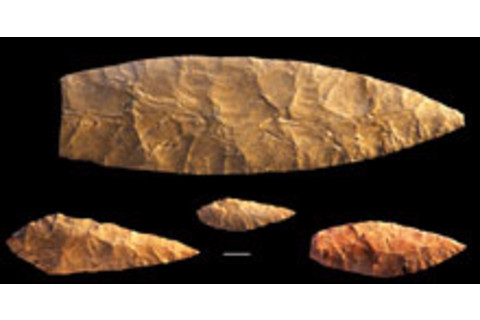
Researchers have long debated whether human migration out of Africa was spurred by climate changes that forced the early humans to move along or by technological innovation that let them take advantage of new possibilities; now a new analysis of stone tools from southern Africa is lending support to the latter camp. Researchers determined that two types of tools were developed during the crucial age from 60,000 to 80,000 years ago when modern humans began to move towards new regions of the globe. Researchers examined tools from nine sites in South Africa, Namibia, and Lesotho. The sophisticated Still Bay tools were made from hard, fine-grained rock called silcrete, and were fashioned between 71,000 and 71,900 years ago. The Howieson's Poort implements were made between 59,500 and 64,800 years ago, and were composed of chipped silcrete rock attached to wood shafts to form weapons.
Comparing these dates with palaeoenvironmental records failed to turn up a close correlation between the industries and dramatic climatic changes, [lead researcher Zenobia] Jacobs says. "We see no consistent pattern between the timing of these industries and major climatic changes" [Nature News].
The study, published in Science [subscription required], doesn't definitely prove that the tools gave early humans the capacity to expand northward through Africa, and beyond to the Middle East.
"We see bursts of migration during a period with technological advances, so technology might have led to the migration," said Zenobia Jacobs.... Alternatively, migration may have spread new ideas and skills throughout various populations. "It's like the chicken-and-egg argument—did migration lead to innovation or did innovation stimulate migration?" Jacobs said [National Geographic News].
Jacobs says the innovation may also have been caused by a growing competition for resources as the human population in Africa expanded.
She says another argument against the idea that environment drives migration is that Homo sapiens was in Africa for over 100,000 years, through many ice ages, without migrating. "Nothing of that forced us to move anywhere. We just happily stayed within Africa," she says [ABC Science].
Related Content: 80beats: Ancient Waterways Could Have Guided Early Humans Out of Africa DISCOVER: Did Humans Colonize the World by Boat?Image: Chris Henshilwood













